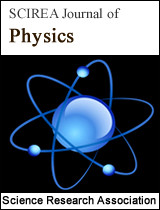Analytic mechanics structure of quantum mechanics and relativity space-time
DOI: 444 Downloads 16172 Views
Author(s)
Abstract
The least action principle is the basic principle of the Newtonian mechanics and geometrical optics. Various forms of analytical mechanics are based on the principle of least action., including Lagrange mechanics, Hamiltonian mechanics and Hertz mechanics based on the principle of minimum curvature. Max Planck believed that this principle is not limited to a particular coordinate system, it can directly applied on the dynamics and the thermodynamics process without losing its universality. Quantum mechanics starts from action quantization, and its various forms include the mathematical structure of analytical mechanics.Quantum mechanics offers a combination of Newtonian and Einsteinian features. Schrodinger believed that quantum wave function has curvature characteristics.
Keywords
The principle of least action, The principle of least curvature, Non-Euclidean line element.
Cite this paper
Wu Xinzhong,
Analytic mechanics structure of quantum mechanics and relativity space-time
, SCIREA Journal of Physics.
Volume 1, Issue 2, December 2016 | PP. 108-124.
References
| [ 1 ] | Xu-Liang, The least action principle and the development of physics, Sichuan education publishing house, 2001,Chengdu,China. |
| [ 2 ] | Wu-Jike, History of mechanics, Shanghai dictionaries press, 2010,Shanghai,China, p192. |
| [ 3 ] | J.Mehra&H.Rehenberg, The Historical Development of Quantum Theory, Vol 5, Part.1, Springer-Verlag,1987, p.522. |
| [ 4 ] | De Broglie, Selected works of de Broglie, Chinese version, translated by Shen-Huichuan,Peking University press,2012,Beijing,China,p.18. |
| [ 5 ] | E. Schrodinger, Lectures of Schrodinger, Chinese version, translated by Fan-Dainian and Hu Xinhe, Peking University press,2007,Beijing,China. |
| [ 6 ] | Dipankar Home , Andrew Whitaker: Einstein’s Struggles with Quantum Theory, 2007. Springer Science+Business Media,LLC.p89. |
| [ 7 ] | James T.Cushing, Quantum Mechanics: Historical Contingency and the Copenhagen Hegemony, The University of Chicago Press, 1994,Chicago. |
| [ 8 ] | Darvin W.Belousek, Einstein’s 1927 Unpulished Hidden-Variable Theory: Its Background, Context and Significance. Studies in History and Philosophy of Modern Physics.1996,27(4),437-461. |
| [ 9 ] | Max Jammer: ‘The Philosophy of Quantum Mechanics’, Chinese version, translated by Qin-Kecheng, Commercial Press, 1989,Beijing. |
| [ 10 ] | Albert Einstein, ‘Selected works of Albert Einstein’, Chinese version,translated by Xu- Liangying, Li-Baoheng, Zhao-Zhongli, Fan-dainian, The commercial press, 1976,Beijing, p368. |
| [ 11 ] | Wu-Tayou, ‘Selected works of Wu-Tayou’s philosophy of Science’, Chinese version, translated by Jin-Wulun, Hu-Xinhe, The encyclopedia of China publishing house,1996,p99. |
| [ 12 ] | Probing the Meaning of Quantum Mechanics: Physical,Philosophical and Logical Perspectives, Proceeding of the Young Quantum Meetings CLEA,Vrije Universiteit Brussel, 8-9 October, 2009. World Scientific Publishing Co.Pte.Ltd,2014. |
| [ 13 ] | Peter Holland, Quantum theory of Motion,Cambridge University 1995. |
| [ 14 ] | Quantum concepts in space and time, Edited by R.Penrose and C.J.Ishanm, Oxford University Press,1986.p293-301. |
| [ 15 ] | Probing the Meaning of Quantum Mechanics: Physical,Philosophical and Logical Perspectives, Proceeding of the Young Quantum Meetings CLEA,Vrije Universiteit Brussel, 8-9 October, 2009. World Scientific Publishing Co.Pte.Ltd,2014.p9-14. |

